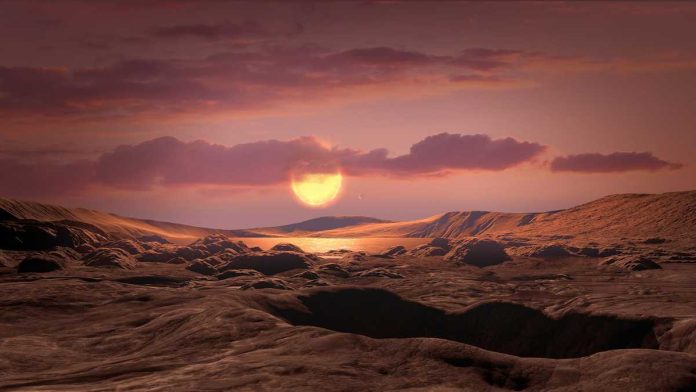Recent observations with the Space Telescope James Webba have discovered a wonderful fact: one of the planets of the Trappist-1 system, which was previously considered an airless world, can have an atmosphere. It is a TRAPPIST-1B, the closest to your star planet.
The Trappist-1B planet, which is very close to its star, undergoes intense star radiation. In previous studies, it was believed that such conditions completely eliminate the presence of the atmosphere. But new data showed that geological processes are either active on this rocky planet, or surrounded by a dense atmosphere, probably rich in carbon dioxide. Scientists suggest that such an atmosphere may be similar to the atmosphere of Saturn Titan's satellite, but with a unique chemical composition that has not met before. This makes Trappist-1B an interesting object for study. The Trappist-1 system, located 40 light years from Earth, is one of the most promising to find life. Her central star - a red dwarf - is much colder and dull than the sun. This allows the population area where there can be a life -fitting conditions, to be much closer to the star.
Seven rocky planets, the size and density similar to the ground, rotate around the Trappist-1. However, Trappist-1b is too hot for life. Instead, its analysis can help scientists understand the mechanisms of atmosphere formation and the impact of starry radiation on rocky worlds. James Webba's telescope data indicate that the TRAPPIST-1B surface is constantly updated. This can be a sign of volcanic or tectonic activity. Another explanation is the dense atmosphere that effectively protects the planet from radiation.
TRAPPIST-1B is still a mystery. Its atmosphere, if it really exists, has a unique composition that does not look like any other world in the solar system. Scientists believe that future observations will answer these questions and help you better understand the nature of exoplanet.


